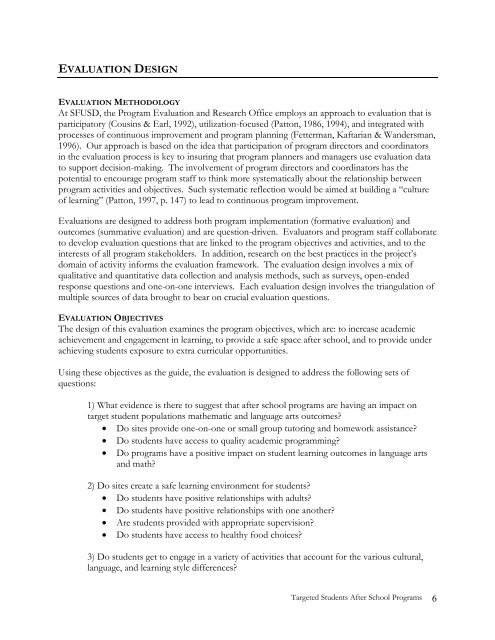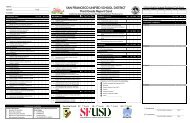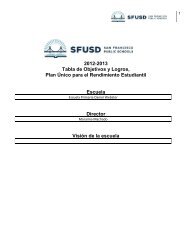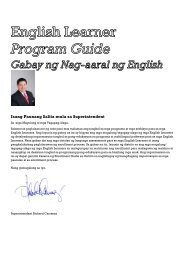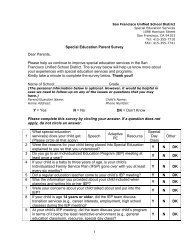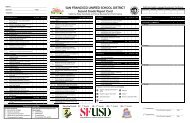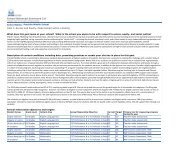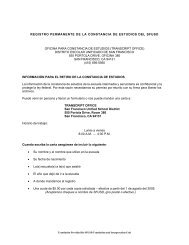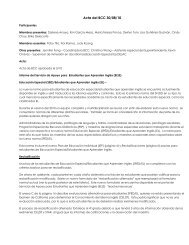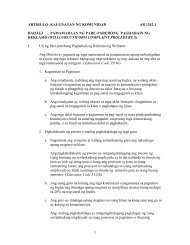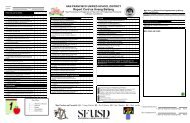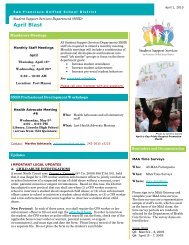Targeted After School Evaluation Report 2009-10 - San Francisco ...
Targeted After School Evaluation Report 2009-10 - San Francisco ...
Targeted After School Evaluation Report 2009-10 - San Francisco ...
- No tags were found...
You also want an ePaper? Increase the reach of your titles
YUMPU automatically turns print PDFs into web optimized ePapers that Google loves.
EVALUATION DESIGN<br />
EVALUATION METHODOLOGY<br />
At SFUSD, the Program <strong>Evaluation</strong> and Research Office employs an approach to evaluation that is<br />
participatory (Cousins & Earl, 1992), utilization-focused (Patton, 1986, 1994), and integrated with<br />
processes of continuous improvement and program planning (Fetterman, Kaftarian & Wandersman,<br />
1996). Our approach is based on the idea that participation of program directors and coordinators<br />
in the evaluation process is key to insuring that program planners and managers use evaluation data<br />
to support decision-making. The involvement of program directors and coordinators has the<br />
potential to encourage program staff to think more systematically about the relationship between<br />
program activities and objectives. Such systematic reflection would be aimed at building a “culture<br />
of learning” (Patton, 1997, p. 147) to lead to continuous program improvement.<br />
<strong>Evaluation</strong>s are designed to address both program implementation (formative evaluation) and<br />
outcomes (summative evaluation) and are question-driven. Evaluators and program staff collaborate<br />
to develop evaluation questions that are linked to the program objectives and activities, and to the<br />
interests of all program stakeholders. In addition, research on the best practices in the project’s<br />
domain of activity informs the evaluation framework. The evaluation design involves a mix of<br />
qualitative and quantitative data collection and analysis methods, such as surveys, open-ended<br />
response questions and one-on-one interviews. Each evaluation design involves the triangulation of<br />
multiple sources of data brought to bear on crucial evaluation questions.<br />
EVALUATION OBJECTIVES<br />
The design of this evaluation examines the program objectives, which are: to increase academic<br />
achievement and engagement in learning, to provide a safe space after school, and to provide under<br />
achieving students exposure to extra curricular opportunities.<br />
Using these objectives as the guide, the evaluation is designed to address the following sets of<br />
questions:<br />
1) What evidence is there to suggest that after school programs are having an impact on<br />
target student populations mathematic and language arts outcomes<br />
Do sites provide one-on-one or small group tutoring and homework assistance<br />
Do students have access to quality academic programming<br />
Do programs have a positive impact on student learning outcomes in language arts<br />
and math<br />
2) Do sites create a safe learning environment for students<br />
Do students have positive relationships with adults<br />
Do students have positive relationships with one another<br />
Are students provided with appropriate supervision<br />
Do students have access to healthy food choices<br />
3) Do students get to engage in a variety of activities that account for the various cultural,<br />
language, and learning style differences<br />
<strong>Targeted</strong> Students <strong>After</strong> <strong>School</strong> Programs 6


